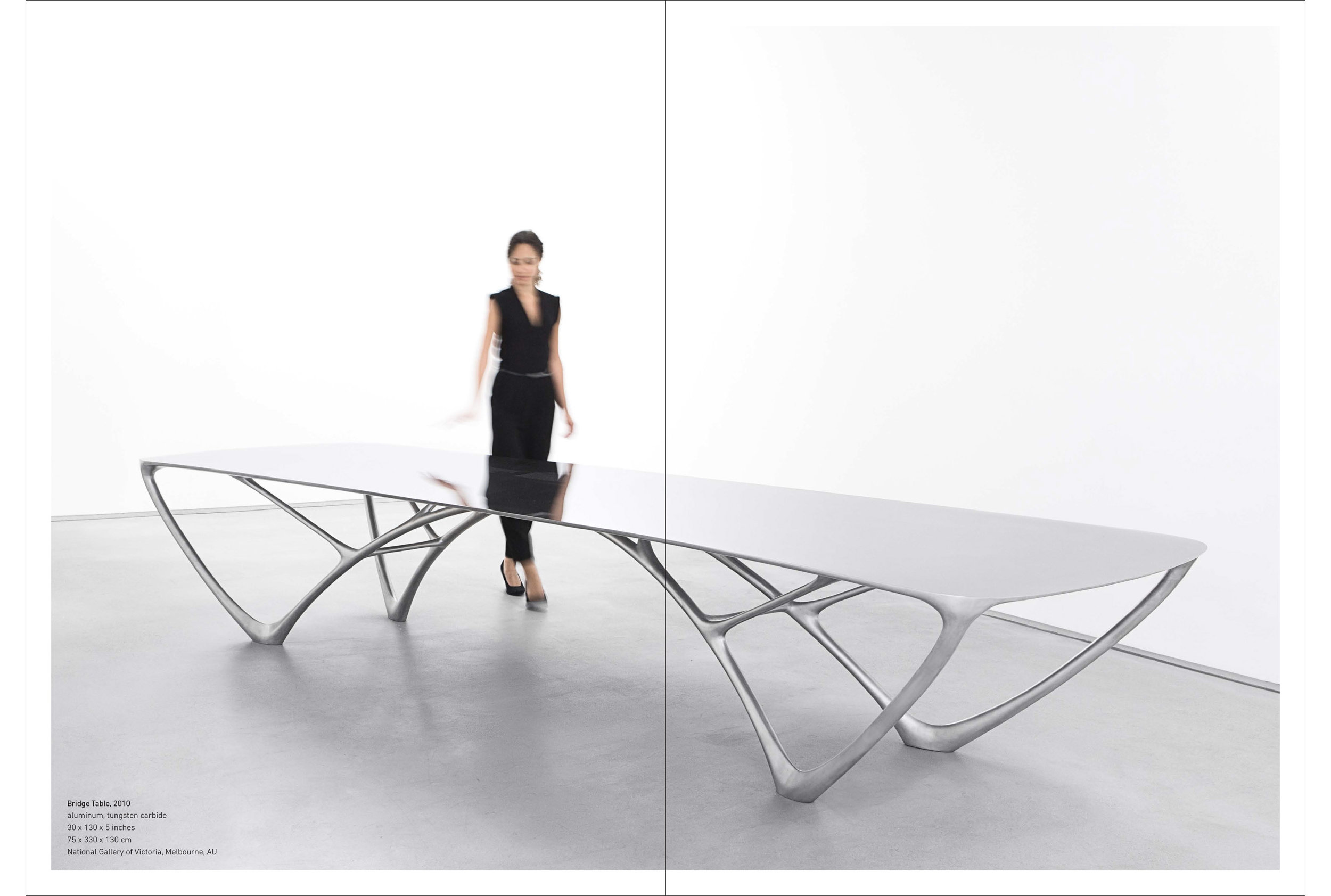Joris Laarman Lab
Joris Laarman, Andrea Lipps, Sarah Schleuning, Cindi Strauss & Mark Wilson
When we met with Joris Laarman for the first time in 2007, it was immediately clear to us that he had exceptional talent. And though he was not yet ready for a solo survey exhibition at that time, it was also perfectly clear to us that after being given more time to develop and implement his ideas and experiments, we would definitely do so. In our roles as curators at the Groninger Museum, the Netherlands, we have always searched for younger artists who we feel are going to shape and change the future in their respective fields. We started to collaborate with Laarman and to collect his work, and now the Groninger Museum is the proud owner of some key pieces of his oeuvre, among them the iconic Bone Chaise, Branch Bookshelf, Heatwave, Ivy, and works from the Digital Matter and Dragon series.
Now, by 2017, much has happened; the Lab has grown extensively, and Joris and his team have realized an impressive collection of objects and series of works. Many of these contain references to historical periods such as the rococo style or Art Nouveau. Yet, he seems not only to be accountable to the past but also to emphasize the future, which is an incredibly important slant to his work. A major motif is the “ornament” that runs through his body of work like a common thread. It can possibly be conceived as a symbol of the ongoing struggle between tradition and renewal, but also as the link between technology and craftsmanship, or maybe even the man-made versus the machine age.
–From the Introduction by Mark Wilson and Sue-an van der Zijpp
Furniture generated by smart algorithms, the first fully functional 3-D printed steel bridge, and a 3-D printable chair that can be downloaded from the Internet—these are but a few examples of the ingenious oeuvre of Dutch designer and inventor Joris Laarman (b. 1979), who works at the intersection of design, art and engineering. Part of the recent high-profile Dutch design movement, Laarman quickly set himself apart from his peers with the Heat Wave Radiator, which erases the lines between the functional and the decorative. Quickly embracing digital technologies and applying them to the traditional field of design, Laarman has produced instant icons such as the “Bone Chair” designs, which harnesses a computer algorithm to mimic bone growth for the form of the designs. He has also bridged the distance between digital technology and craftsmanship with his Makerchair, downloadable as an open-source design. Abolishing the distinctions between natural and manmade, Laarman’s work opens a new avenue for the future of design.
In parallel with the touring exhibition, this handsome hardcover catalog with over 300 color illustrations goes far beyond the exhibition, revealing Laarman’s process, his studio and numerous designs in office, home and workshop settings. Flowing throughout the book are informative project descriptions, a statement from the LAB and assorted essays. The American museum tour includes the Cooper Hewitt, NY (2017), the High Museum, Atlanta, and MFA, Houston (2017–18).
Price: US $60
ISBN: 978-1-947359-00-0
Hardcover
7.75 x 11” (197 x 280 mm)
304 pages
350 color illustrations
Release date: October 2017









